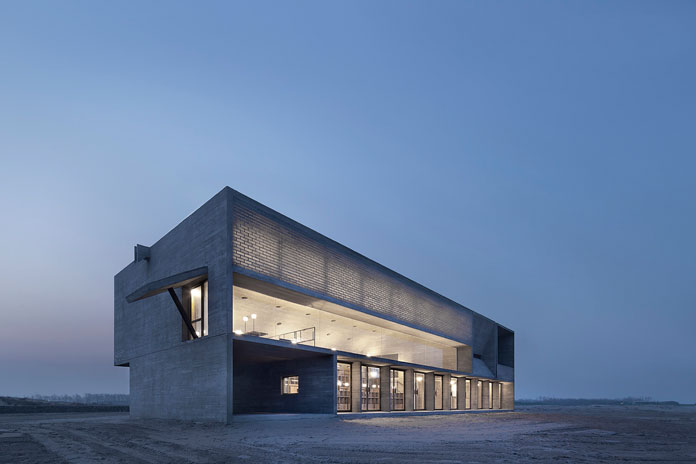In the ever-evolving landscape of web development, the line between front-end and back-end is constantly being redefined. Developers seek the rich, interactive experience of Single-Page Applications (SPAs) without sacrificing the performance and SEO benefits of traditional server-rendered applications. This is where the “modern monolith” architecture shines, and the combination of AdonisJS, Inertia.js, and Vue.js has become a powerhouse stack for building such applications. The latest advancements bring a game-changing feature to this trio: first-class support for Server-Side Rendering (SSR).
This article provides a comprehensive technical guide to implementing SSR with the AdonisJS Inertia adapter for Vue. This update is significant AdonisJS News, as it directly addresses one of the primary drawbacks of client-rendered SPAs—poor initial load performance and challenges with search engine optimization. We will explore the core concepts behind this technology, walk through a practical implementation, discuss advanced techniques, and cover best practices for building high-performance, SEO-friendly web applications. This development places AdonisJS in the same high-performance conversation as frameworks featured in Next.js News and Nuxt.js News, offering a compelling alternative for the full-stack TypeScript ecosystem.
Understanding the Core Concepts: Why SSR Matters
Before diving into the code, it’s crucial to understand the problem SSR solves and how it integrates into the Inertia.js paradigm. Inertia.js is not a framework itself but a clever piece of “glue” that lets you build SPAs using classic server-side routing and controllers, avoiding the need to build a separate API.
The Classic Inertia Flow (Client-Side Rendering)
Traditionally, an Inertia.js application works like this:
- The user makes the very first request to your application.
- The AdonisJS server returns a minimal HTML shell that loads your JavaScript and CSS assets.
- The client-side JavaScript (e.g., your Vue app) boots up, makes an XHR/Fetch request back to the same URL to get the initial page data (as JSON).
- The Vue app then renders the component and “paints” it into the HTML shell.
- Subsequent navigation is handled entirely on the client-side via XHR, swapping out page components without a full page reload.
This works beautifully for user experience after the initial load, but that first request can be slow and results in a non-indexable HTML shell, which is problematic for SEO.
The New SSR Flow: The Best of Both Worlds
With Server-Side Rendering, the initial request lifecycle is transformed, bringing significant benefits. This is a major update in the world of Vue.js News and full-stack development.
- The user makes the first request to your application.
- The AdonisJS server receives the request and routes it to a controller.
- The controller fetches the necessary data for the page.
- Instead of sending a shell, the AdonisJS Inertia adapter uses a Node.js environment to render the Vue component into a complete HTML string, with all the data pre-populated.
- This fully-formed HTML document is sent to the browser. The user sees meaningful content almost instantly (fast First Contentful Paint – FCP).
- Meanwhile, the client-side JavaScript loads in the background. Once loaded, Vue “hydrates” the server-rendered HTML, attaching event listeners and making the page interactive without re-rendering the DOM.
- Subsequent navigation works just like the classic Inertia flow—fast, client-side transitions.
This approach gives you the snappy, app-like feel of an SPA combined with the SEO and performance benefits of a server-rendered application. This is a pattern that has been popularized by frameworks like Remix and Next.js, and seeing it integrated so cleanly into the AdonisJS ecosystem is a testament to the latest trends in Node.js News.
A Practical Guide to Implementing SSR
Let’s get our hands dirty and set up an AdonisJS project with Inertia SSR. This guide assumes you have a basic AdonisJS project with the Inertia provider already installed.
Step 1: Configuration Updates
First, you need to enable SSR in your Inertia configuration and update your Vite configuration to handle the server build. The latest Vite News highlights its growing capabilities in handling complex build targets like SSR.
In your config/inertia.ts file, simply enable the ssr option:

import { defineConfig } from '@adonisjs/inertia'
export default defineConfig({
/**
* Path to the Edge view that will be used as the root view for Inertia responses.
*/
rootView: 'inertia_layout',
/**
* Data that should be shared with all rendered pages.
*/
sharedData: {
errors: (ctx) => ctx.session.flashMessages.get('errors'),
},
/**
* Options for Server-Side Rendering
*/
ssr: {
enabled: true,
// You can also define a list of pages to SSR
// pages: ['pages/home'],
},
})
Next, you need to create a separate entry point for your server-side bundle. Create a new file at resources/js/ssr.ts. This file will be responsible for exporting a function that Inertia can use to render your Vue app on the server.
import { createSSRApp, h } from 'vue'
import { renderToString } from '@vue/server-renderer'
import { createInertiaApp } from '@inertiajs/vue3'
import createServer from '@inertiajs/vue3/server'
createServer((page) =>
createInertiaApp({
page,
render: renderToString,
resolve: (name) => {
const pages = import.meta.glob('./pages/**/*.vue', { eager: true })
return pages[`./pages/${name}.vue`]
},
setup({ App, props, plugin }) {
return createSSRApp({
render: () => h(App, props),
}).use(plugin)
},
}),
)
This server entry point is distinct from your client-side entry point (resources/js/app.ts), which handles hydration on the browser.
Step 2: Creating an SSR-Ready Route and Controller
Your AdonisJS controllers and routes don’t need significant changes. The beauty of this integration is that the `inertia.render` method transparently handles SSR if it’s enabled. This is a great example of the developer experience that keeps AdonisJS News at the forefront of backend framework discussions.
Let’s define a route in start/routes.ts:
import Route from '@ioc:Adonis/Core/Route'
import PostsController from 'App/Controllers/Http/PostsController'
Route.get('/posts/:id', [PostsController, 'show'])
Now, the corresponding controller method in app/Controllers/Http/PostsController.ts will fetch data and pass it to the view. This code remains identical whether you are using SSR or not.
import type { HttpContextContract } from '@ioc:Adonis/Core/HttpContext'
import Post from 'App/Models/Post'
export default class PostsController {
public async show({ inertia, params }: HttpContextContract) {
// Fetch data from the database
const post = await Post.findOrFail(params.id)
// The inertia.render method will now automatically perform SSR
// on the server before sending the response.
return inertia.render('Posts/Show', { post })
}
}
Step 3: Building the Vue Component
Your Vue component receives props just as it normally would. However, you must be mindful of the execution context. Code inside setup or created will run on both the server and the client. Code that requires browser-specific APIs (like window or document) must be placed in the onMounted lifecycle hook, which only runs on the client.
Here is an example of resources/js/pages/Posts/Show.vue:
<script setup>
import { onMounted } from 'vue'
const props = defineProps({
post: Object,
})
// This log will appear in your server's terminal during SSR
console.log('Component setup executed. Post title:', props.post.title)
onMounted(() => {
// This code ONLY runs on the client after hydration
console.log('Component has been mounted in the browser.')
// It's safe to access `window` or `document` here
document.title = `My App | ${props.post.title}`
})
</script>
<template>
<article>
<h1>{{ post.title }}</h1>
<div class="content">
{{ post.content }}
</div>
<p>Published on: {{ new Date(post.createdAt).toLocaleDateString() }}</p>
</article>
</template>
When you run your development server (node ace serve --watch), the adapter will now build both a client and server bundle, and your initial page loads will be fully rendered HTML.
Advanced Techniques and Considerations
While the basic setup is straightforward, real-world applications often require more nuanced solutions. This is where understanding the deeper mechanics becomes essential, a topic often covered in advanced TypeScript News and framework updates.
Sharing Data and Handling Authentication
A common requirement is sharing request-level data, such as the authenticated user, with every page. The Inertia middleware is the perfect place for this. Data shared via inertia.share() will be available as props during both server rendering and client-side navigation.
In start/inertia.ts:
import Inertia from '@ioc:Adonis/Addons/Inertia'
Inertia.share({
user: (ctx) => {
return ctx.auth.user // Share the authenticated user object
},
errors: (ctx) => {
return ctx.session.flashMessages.get('errors')
},
}).version(() => Inertia.manifestFile('public/assets/manifest.json'))
This `user` object will now be available as a prop in all your Vue page components, correctly serialized during SSR and updated on client-side transitions.
Managing Hydration Mismatches
A “hydration mismatch” occurs when the DOM rendered on the server is different from the DOM the client-side Vue app expects to see. This can cause Vue to discard the server-rendered markup and re-render everything, negating the benefits of SSR. Common causes include:
- Using browser-only APIs outside of
onMounted. - Generating random numbers or timestamps that differ between server and client.
- Rendering content based on client-specific information (e.g., timezone, screen size) before hydration.
To avoid this, always place client-specific logic inside the onMounted hook and ensure any data used for rendering is consistently passed from your AdonisJS controller.
Best Practices and Performance Optimization
To get the most out of your SSR setup, follow these best practices. These tips are universally applicable and echo trends seen across the web development sphere, from React News to Svelte News.
1. Guard Against Server-Side Errors
Always remember that part of your front-end code now runs in a Node.js environment. Any direct calls to window, document, or other browser-specific globals will crash the server-rendering process. You can guard your code using Vue’s lifecycle hooks or by checking the environment.
import { onMounted } from 'vue'
// Bad: This will crash on the server
// const screenWidth = window.innerWidth;
onMounted(() => {
// Good: This code is safe as it only runs in the browser
const screenWidth = window.innerWidth;
});
// Alternative check
if (import.meta.env.SSR) {
// Server-only logic
} else {
// Client-only logic
}
2. Optimize Data Fetching
Your server-render time is now part of the user’s Time to First Byte (TTFB). Slow database queries in your controllers will directly impact page load speed. Ensure your data fetching is highly optimized with proper indexing, eager loading relationships (e.g., using `preload` in Lucid ORM), and avoiding N+1 query problems.
3. Implement Caching
For pages that are content-heavy and don’t change often, consider implementing a caching layer. You can cache the entire HTML response using a reverse proxy like Nginx or Varnish, or cache the data at the controller level using AdonisJS’s caching layer or Redis. This dramatically reduces the load on your Node.js server.
4. Monitor Your Application
With SSR, you are adding a CPU-intensive task to your server. It’s crucial to monitor your server’s CPU and memory usage. Tools like PM2, Datadog, or New Relic can help you identify performance bottlenecks in your rendering process before they impact users. This is a critical practice highlighted in professional NestJS News and Express.js News circles as well.
Conclusion: A New Era for Full-Stack TypeScript
The introduction of robust Server-Side Rendering support in the AdonisJS Inertia adapter is more than just a new feature; it’s a significant step forward for the “modern monolith” architecture. It empowers developers to build highly interactive, performant, and SEO-friendly applications without the complexity of managing a separate front-end application and back-end API.
By combining the structured, elegant back-end of AdonisJS with the reactive front-end capabilities of Vue.js, all glued together by Inertia.js, you get a developer experience that is second to none. This update closes a critical feature gap, making the stack a formidable competitor to established players like Next.js, Nuxt.js, and Remix. For developers invested in the TypeScript and Node.js ecosystem, this is exciting news that promises a more integrated and powerful way to build for the modern web.
Your next steps should be to explore the official documentation, experiment with a new project, and consider how you can leverage SSR to enhance the performance and visibility of your existing or future AdonisJS applications.

